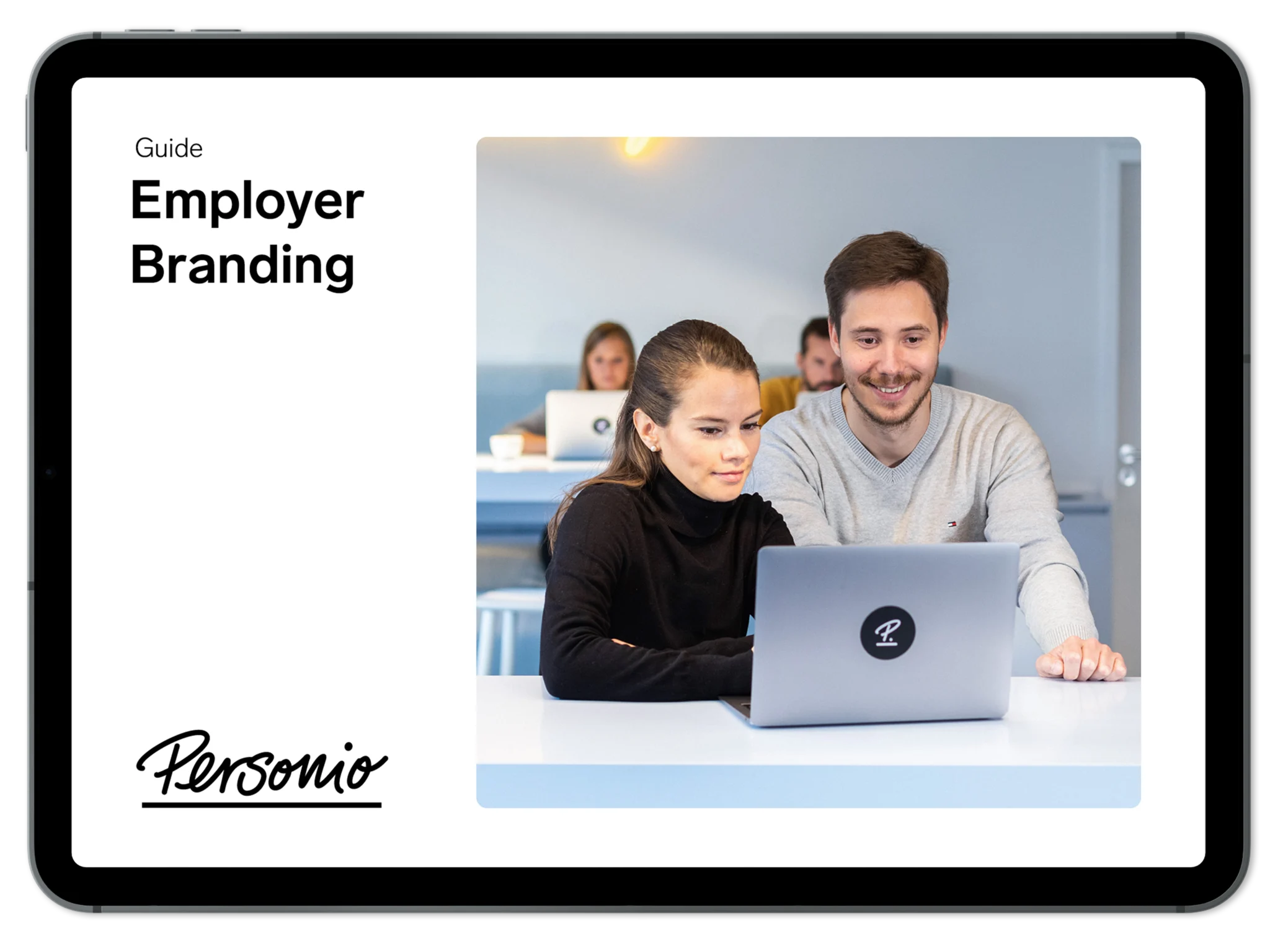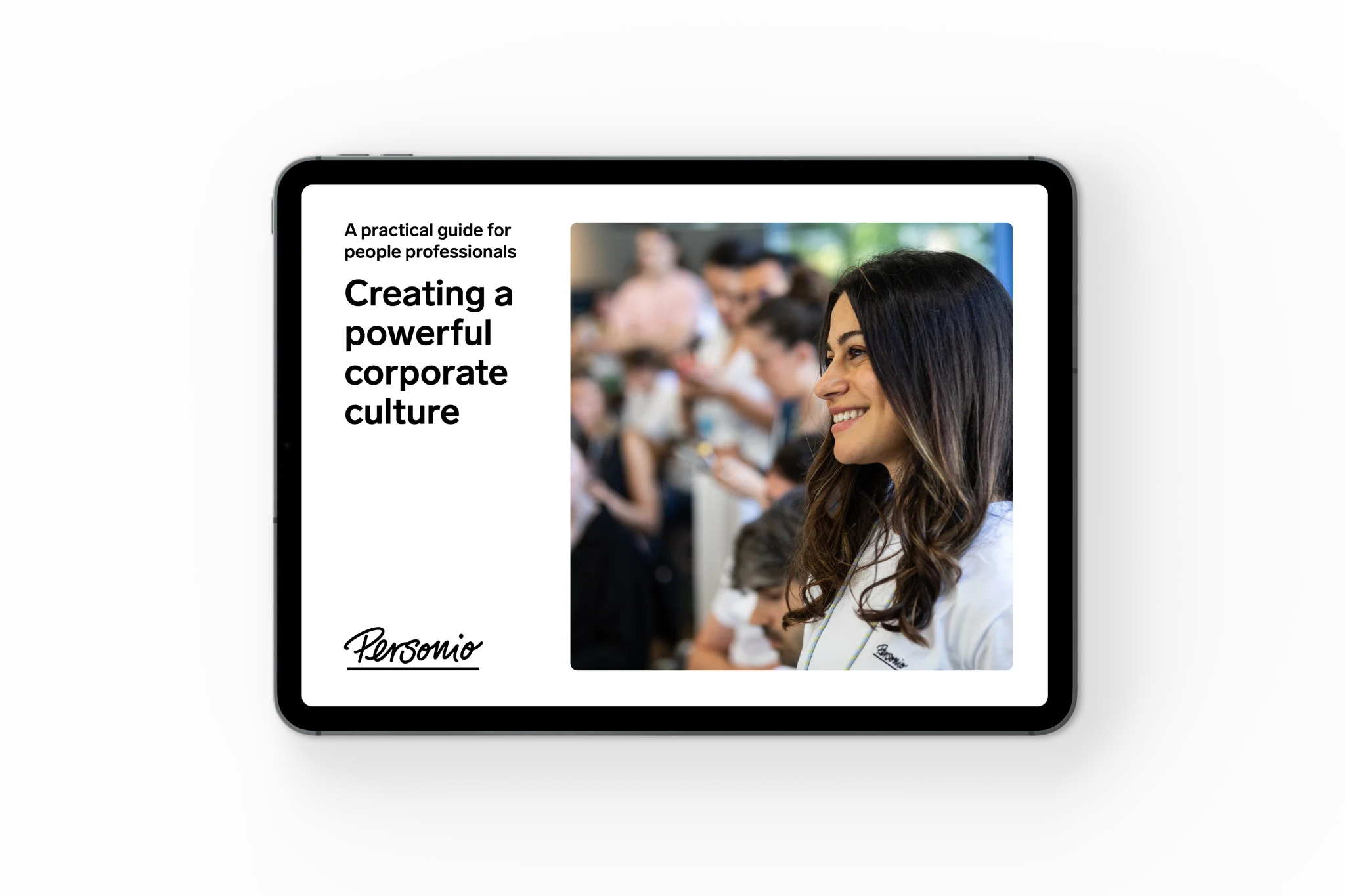What Is Employer Branding? Best Practices & How to Start

In the quest for talent, employer branding is non-negotiable. While there are multiple recruiting strategies and channels out there, employer branding can serve as a foundation and amplifier for sourcing or candidate experience.
In this article, we offer step-by-step instructions on how to successfully recruit employees with the help of your employer brand.
Want to become an employer branding expert? Download our free guide.What is employer branding?
Employer branding is a strategy to position your organisation as the ‘employer of choice‘ for both your current employees (as a retention measure) and prospective candidates (as an attraction strategy). Your employer brand is how both current and potential employees view your company, what you value and what it's like to work for you.
The purpose of employer branding is two-fold. On one hand, it’s an internal strategy to help boost retention and employee referral rates. On the other, it’s an external strategy to attract top talent to your organisation through marketing, fringe benefits and how you present your org to the world.
Employer branding is a marketing strategy used by HR to create an attractive brand for potential candidates. In the same way that companies develop marketing and communication initiatives to help them win and retain high-quality customers, employer branding communication tools and strategies attract and retain top talent.
Why is employer branding important?
Employer branding is not simply a marketing strategy. It is your organisation’s competitive advantage in a war for talent. Put simply, an emphasis on employer branding helps take all of the things that make your company great and emphasises them to the world of potential applicants.
At the same time, it can also reveal areas where you need to put in work. It can help reveal where your organisation is currently weak when it comes to talent attraction and retention. In that way, employer branding can help double down on what you do well, and reveal where you still need to put in some work.
What does employer branding look like in practice?
Employer branding can take a lot of different shapes and forms. But some of the most common examples of employer branding out in the world of work include:
Having and leveraging an attractive careers page on your website
Using social media or your company blog to share employee success stories
Managing and benefitting from employee/candidate review sites, like Glassdoor
Investing in candidate experience
Maintaining a presence at career fairs and other relevant events
How can you establish your employer brand?
There are five unique steps in the employer branding process. Below, we’ll detail each for you, but here’s a quick visualisation at how the process might look:
Step 1: Define your employer value proposition (EVP)
As a first step, think about what you stand for as a company and what sets you apart from the competition through an employer value proposition (EVP). The following questions should help:
What kind of an employer are you?
Are there things you stand for? What do you want to stand for? Do you have a long-term vision?
What makes you unique and stand out as an employer?
Why should your existing employees stay at your company and why should new hires join?
To what extent are you already an attractive employer in the eyes of your target group?
Where and on which channels can your target group be found? How can you reach them?
Does this compare to your competitors? How do you differentiate yourself from them?
Best Practice: You may find it helpful to turn things around and instead start off by asking yourself: What does not define our company? What are some things we do not stand for?
Step 2: Create a communication plan
Too many companies stop at step one. They create their unique EVP, sink a lot of time into it and consider it a done deal. But now is only the beginning of your journey. You need to communicate your EVP to the world.
To do this, you should take a closer look at your ‘talent target group’ and understand the contact points you have with them. You’ll need to have a deeper understanding of where this contact can take place:
Career page or blog
Social media channels
Online media
Newsletter
Employees/brand ambassadors
Events/meet-ups/career fairs
Your EVP is a reflection of what makes your organisation special, but you may need to attune it to your target group. That will most likely come about in the communication channel that you use. With that in mind, make sure you are using channels that make sense for the talent you’re trying to reach.
Step 3: Implement your content strategy
After you have outlined your corporate brand and defined the communication channels you are going to use, it is time to think about your marketing and content. Consider the following:
What type of content do you want to publish, when and at what intervals do you want to publish it and through which channels?
Which events do you want to treat as employer branding events and use to present yourself as an attractive employer?
What employer branding materials will you need for this, e.g. articles containing employee interviews or videos?
How can your employees support you as brand or company ambassadors? (Below, we explain how we use this employer branding model at Personio)
Best Practice: You should publish social media content regularly so that social media users will follow you on a long-term basis. An editorial calendar should help.
Step 4: Find and recruit employees
Now it is time to harvest the fruits of your labour. In this step, your employer branding initiatives merge with your recruiting initiatives. Because your employer branding feeds directly into your recruitment process, it is now becoming the first point of contact with your company. If you impress at this stage, you will find yourself reaping the rewards.
Best Practice: Your recruiting process here is key. Chances are you’ll need an applicant tracking software to truly impress candidates, which can also help your organisation grow at scale. Personio can help with this.
Step 5: Retain your top talent
You want the employees you recruit to stay at your company. The positive impression they got from the application process should be confirmed in their everyday working life. This means that you will need to constantly keep working on your employer brand.
Ask your employees what they like about their work and workplace? What are they not enjoying right now?
Use your internal communication channels to talk about the benefits you offer. These do not always have to be financial. A good work-life balance or a hybrid working model is also popular.
3 ways to enhance your employer brand
Ultimately, how do you turn theoretical employer branding best practices into concrete initiatives?
To answer this question, let’s look at how we work and use Personio as an example. This way, you can see how using these aforementioned initiatives can get your employees into ambassadors for your brand.
1. Employer value proposition
In September 2019, we launched Personio’s new slogan: "Start Up Your Way.” Leading up to this, we held workshops, defined our values and constructed our employer brand identity.
This process was made up of nine total steps:
A kick-off workshop with Personio’s management
The internal ‘hackathon,’ entitled “Hacka10”: an internal workshop with 3 – 4 employees per department
Analysing the information with an external agency
Discussing EVP approaches with management and employees
Finalising the approach and positioning statement, communicating it to employees and encouraging slogan development
Slogan development brainstorming with a group of employees
Briefing a creative agency to develop the slogan and style guide
Three revision cycles to finalise slogan and design
Internal and external launch, integration into all communication and Personio’s career site
2. Career website
Our slogan is the common thread that runs through all our projects. This also applies to our career website, which is often the first point of contact for applicants.
Here is the thinking that went into it:
Applicant-first: Make your site as user-friendly as possible and make information quickly accessible.
Content: You know from the EVP process what you stand for as a company and your values. So, on your career website, bring your corporate culture to life.
Employee emphasis: Be as personal as possible. Position jobs prominently. Ideally, so they are visible at first glance to allow interested candidates to apply immediately.
3. Employees as multipliers
To reach even more potential candidates, you could use your employees as ’employer brand multipliers.’ The best thing about this employee branding strategy is that it costs very little.
Good onboarding is very important. It forms the basis for employee retention and, later on, employee recommendations. It also starts well in advance of a new hire’s first day on the job. Send a welcome message to the new hire from their future team, invite them to company events and give them all the information they will need for their first day. This checklist will help you along the way.
Encourage employee recommendations. For example, offer a bonus for every successful recommendation. Our HR newsletter regularly reminds employees about the referral program. At internal events such as the referral lunch, we go through our employees’ social networks to look for suitable contacts who could soon be colleagues.
Employees serve as ambassadors. Help your employees to take on the role of your ambassadors. For example, create profile pictures for their social media channels and share, comment and tag their posts. Bring your employees forward in your own content and build a story around them.
Employer branding is crucial
When it comes to their ability to hire great talent, 80% of talent acquisition managers agree that employer branding is key. It can increase the quality of your hires, reduce hiring times and costs, and it can even lead to greater internal satisfaction with current employees (boosting retention of top talent).
All that in mind, your HR function or a strategic HRBP can only focus on your employer brand when they have one thing: time. Personio can help modernise all your HR processes, so you can focus on modernising your employer brand for a new era of talent attraction and retention. Find out more about us here, or book a web demo today to see our product in action.
Disclaimer
We would like to inform you that the contents of our website (including any legal contributions) are for non-binding informational purposes only and does not in any way constitute legal advice. The content of this information cannot and is not intended to replace individual and binding legal advice from e.g. a lawyer that addresses your specific situation. In this respect, all information provided is without guarantee of correctness, completeness and up-to-dateness.

